
Book a Consultation
Thank you!
Your form has been sent successfully.

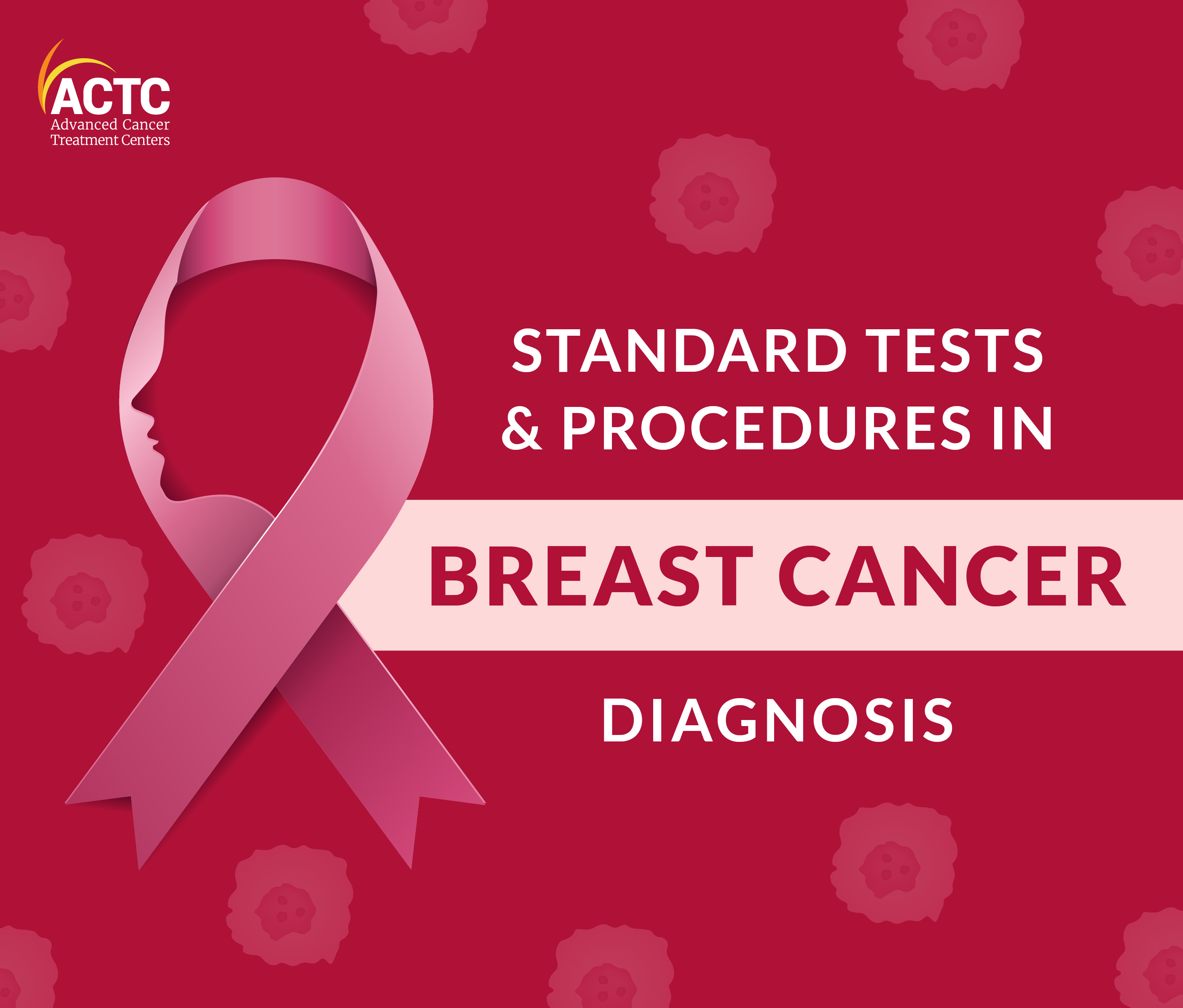

May 27, 2021
Breast cancer is the 2nd most common cancer in US women. The American Cancer Society estimates that approximately 297,790 new cases of invasive breast cancer will be diagnosed in women in 2023. Fortunately, breast cancer is treatable if diagnosed early.
In this blog post, we will share detailed insights into breast cancer, its causes, symptoms, process of diagnosis, and the different treatment alternatives and possibilities.
Read more: Can Dense Breasts Increase Breast Cancer Risk?
Breast cancer is a type of cancer that develops in breast cells. This cancer is a lot more common in women. But in some cases, men also can also get diagnosed with it. In the United States, it is the most common form of cancer diagnosed in women after skin cancer.
Read more: 3 Reasons Why World Cancer Day is Important
Breast cancer occurs when genes that regulate cell growth start mutating. This mutation makes the cells produce and multiply abnormally. These abnormal cancer cells usually overrun the growth of other healthy breast tissue, and in some cases, move to the lymph nodes under the arms. These lymph nodes are an elemental pathway to promote the cancer cells? movement to other body parts. Generally, this cancer first begins in either the lobules (glands responsible for producing milk) or the tubes (pathways to transfer milk from the lobules to the nipple) of the breast.
Apart from this, it can also start in the fibrous connective or fatty tissue inside the breast. It is also estimated that about 5 to 15 percent of breast cancers are hereditary and occur due to gene mutations passed by generations of a bloodline.
Read more: Dense Breasts - Do They Make You More Susceptible To Breast Carcinoma
Breast cancer warning signs and symptoms may not be the same for all women. Some initial breast cancer symptoms normally appear as a lump in the breast or near the armpit.
A few other common symptoms may include:
Note: Most breast lumps are not necessarily cancerous. However, it is best to be sure and visit cancer care specialists for an examination.
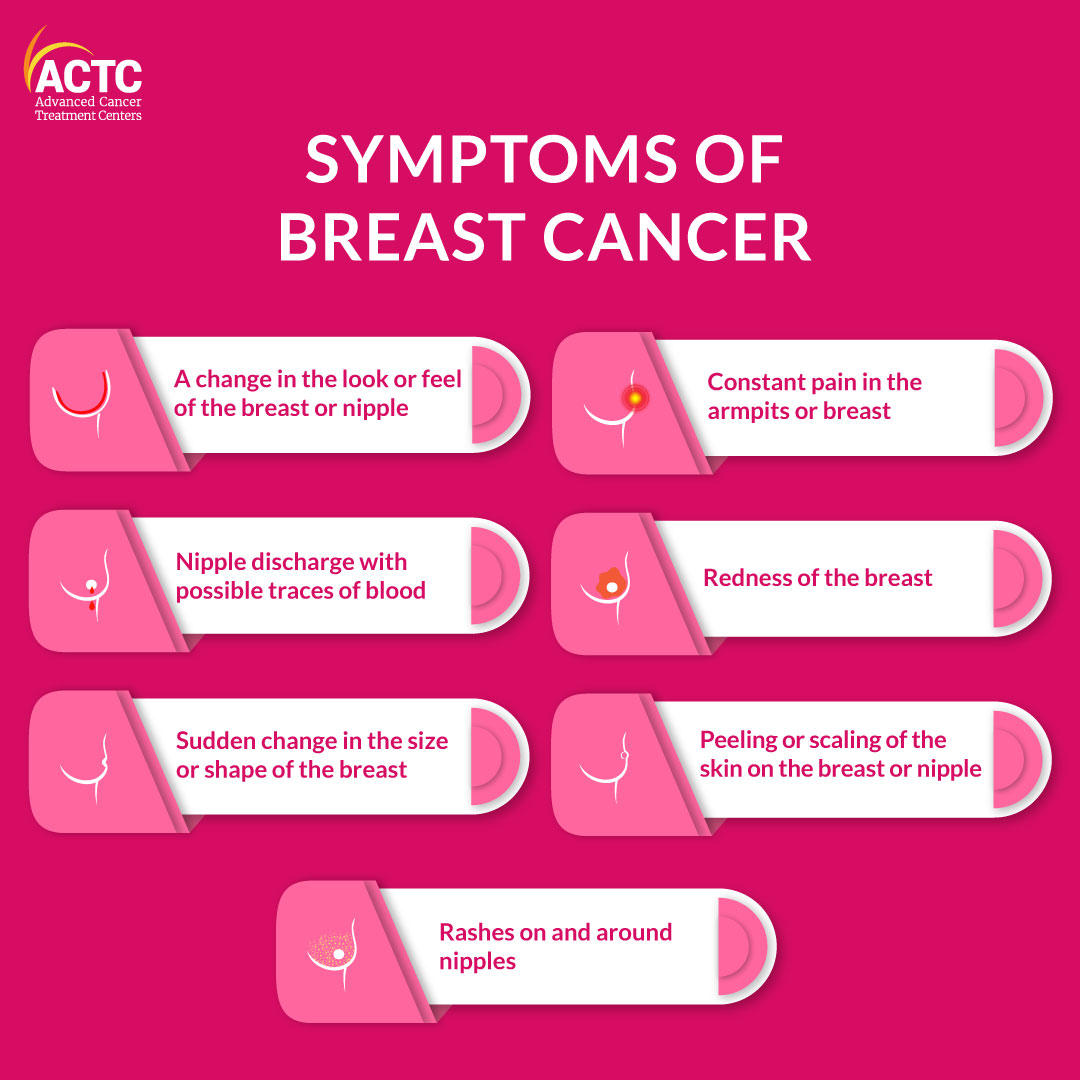
Breast Cancer is detected after the symptoms appear, but numerous women with it experience no symptoms at all. For this reason, routine screenings are important.
Some standard tests and procedures to help in breast cancer diagnosis are:
After going through your medical history, possible risk factors, and symptoms, your doctor will start with a breast examination. The specialist examines the breasts for lumps and some other visible symptoms and abnormalities. It is a physical examination done by a doctor and generally does not need any equipment.
This is the most common type of x-ray test done during a primary screening. Mammograms are administered to detect breast cancer in women with no apparent symptoms. Mammography helps a specialist identify breast lumps, abnormalities and determine if the indicative symptoms you have are because of the presence of cancer.
There are two types of mammograms: diagnostic and screening. In comparison to screening, diagnostic mammograms are more detailed x-rays of the breast done using specialized techniques.
An ultrasound uses sound waves that do not affect the breast tissue to create a clear picture of the deep breast tissues. If a suspicious site or lump is detected in the breast on a screening mammogram, experts may ask for a breast tissue ultrasound. It also provides help in distinguishing between a solid mass and a fluid-filled cyst.
Also known as MRI, these tests are used as a screening tool for people with a higher risk of breast cancer and help in identifying cancer, the extent of the disease, and other abnormalities. MRI can be recommended as a follow-up to a mammogram or an ultrasound.
This is an imaging test, also identified as nuclear medicine breast imaging. This test investigates a breast abnormality discovered during mammography. The procedure is non-invasive, and the patient requires an injection of a radioactivity-emitting drug for this test. This test helps a physician determine the presence of cancer and clear the necessity of a biopsy or additional follow-ups. Since this is not a primary screening tool and cannot substitute mammography, it is used as a screening tool for women who cannot undergo MRI screening and have an elevated risk for breast cancer.
A biopsy is a procedure in which the doctor obtains a breast tissue or fluid sample from the suspicious area for laboratory analysis. These removed samples are analyzed under a microscope and also tested to check for the presence of cancer cells. A biopsy is the only diagnostic way to confirm if the cells are cancerous, the type of cancer that has developed, and also provide a complete picture of the situation. Three types of biopsy procedures are:
If an individual is already diagnosed with breast cancer, she may need additional lab tests to assist with further prognosis. The two commonly done lab tests are the hormone receptor test and the HER2/neu test. The results of these tests provide insight into possible treatment options effective for cancer an individual has.
This is a nuclear imaging test that combines PET and CT scans and provides images pinpointing the location of abnormal cells in the breasts. It helps with the detection of cancer, determines the spread, and estimates the possibility and effectiveness of a treatment plan. This test also determines if cancer has come back after the treatment.
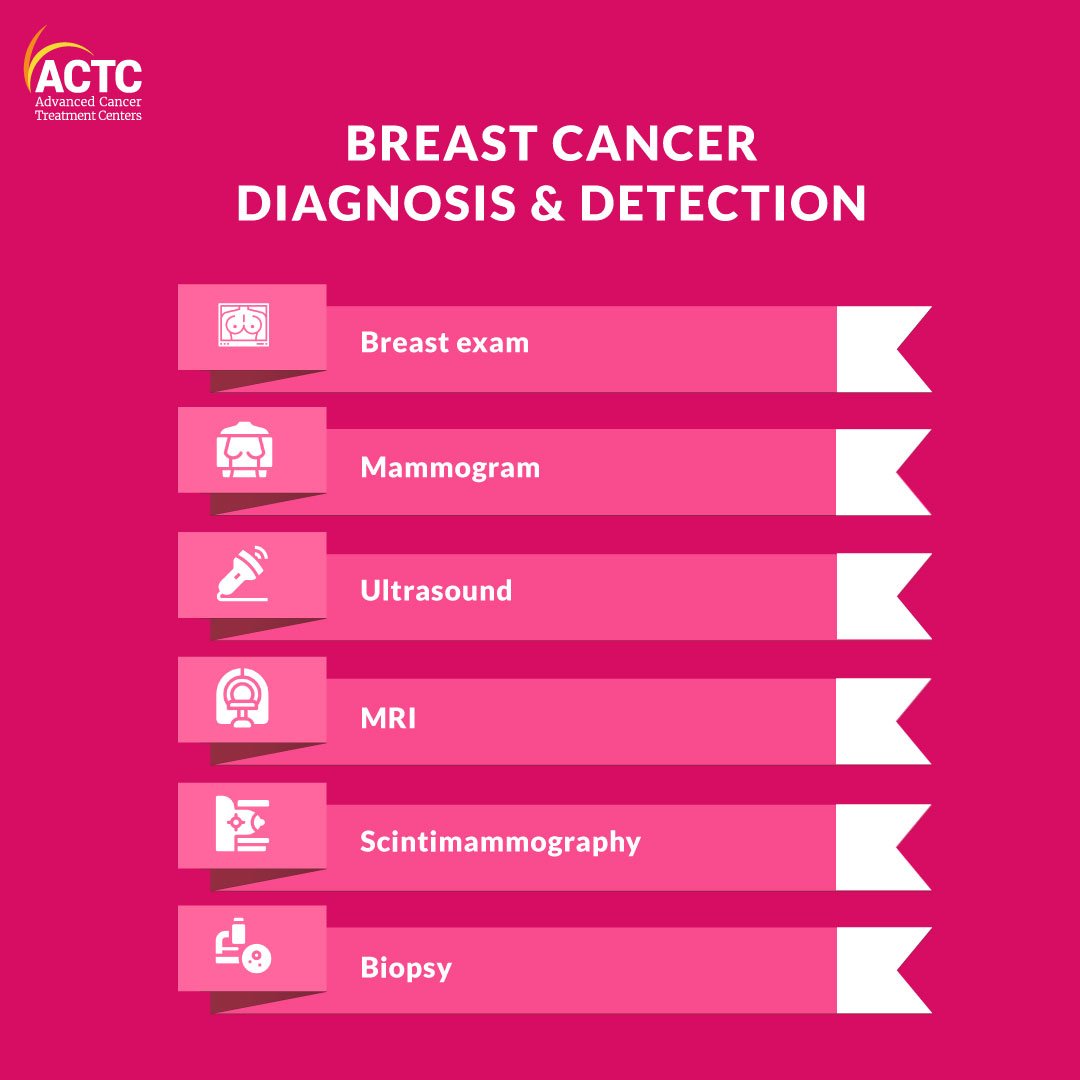
Once you are diagnosed with breast cancer, another step is to establish the stage or extent of the cancer. Cancer staging helps in determining the prognosis and the best possible treatments. Some diagnosis and procedures for staging area:
One doesn?t need to go through all these tests and procedures. Just the appropriate tests based on specific circumstances and symptoms one may be experiencing.
Breast cancer is classified into 0 to IV stages. Where 0 indicates cancer that is noninvasive, Stage IV cancer indicates cancer that has spread to other areas of the body.
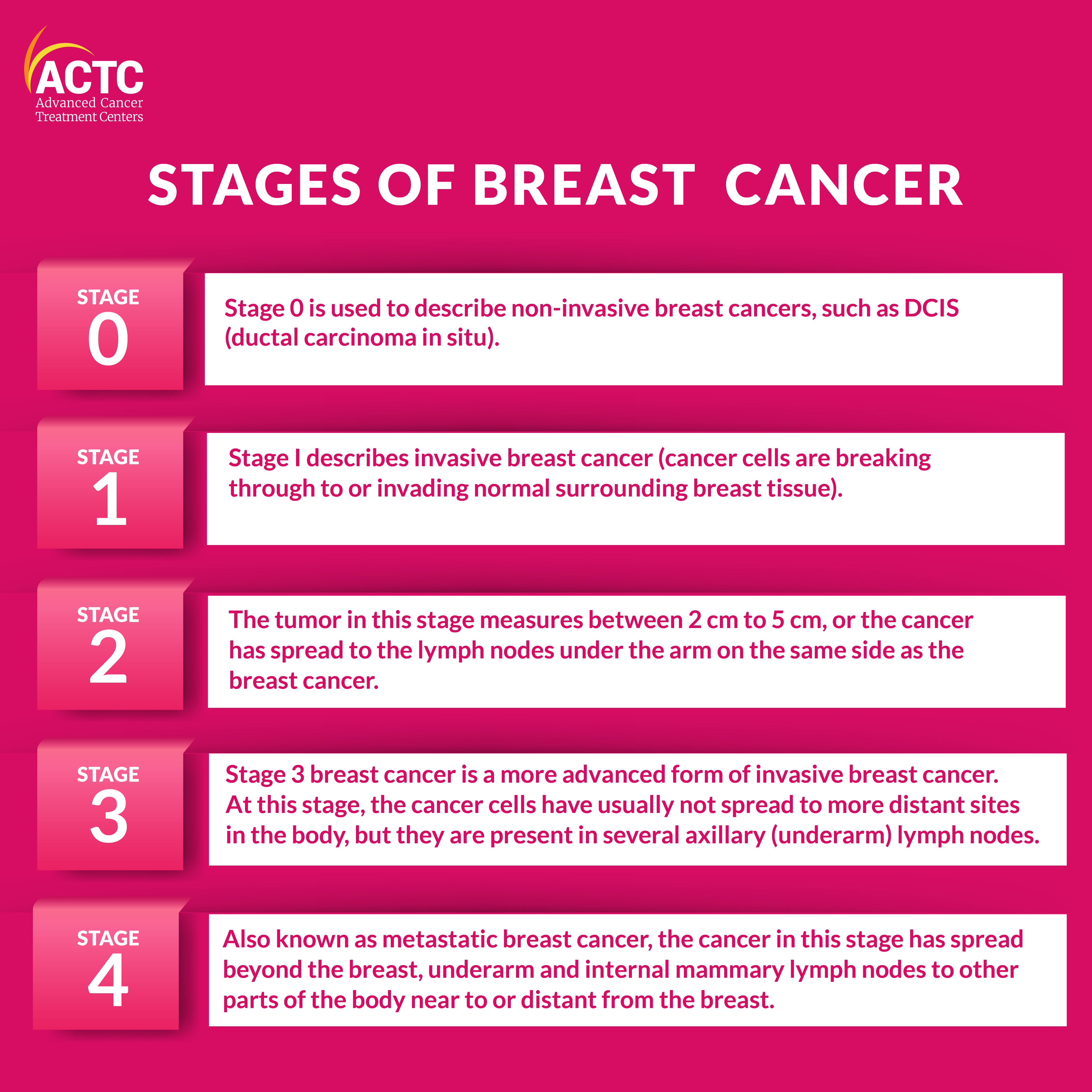
If breast cancer diagnosis results are positive, doctors determine the treatment possibility and alternatives based on the type and its spread. An individual’s overall preferences are also considered before the treatment is started. Some widely used treatments options for breast cancer are:
This treatment includes the removal of either one or both breasts and affected lymph nodes. Apart from this, some other surgeries are:
Lumpectomy: Removal of the tumor and a small margin of encircling healthy tissue.
Mastectomy: Surgery to remove all of your breast tissue.
This therapy uses high-energy radiation beams to destroy cancer cells. Specialists may suggest radiation therapy after a mastectomy for larger cancers, or the ones spread to the lymph nodes.
Chemotherapy uses medications to suppress fast-growing cancer cells. If cancer has a higher possibility of recurrence or spread, chemotherapy may be recommended after surgery. Chemotherapy may also be recommended to shrink tumor size or to control cancer and its symptoms.
This therapy uses substances that are made in the laboratory to boost the body's innate defenses to combat cancer. Immunotherapy treatment can be used alone, as well as combined with other treatments.
Read more: Novel Cancer Treatment Revolutionizing Cancer Care With New Technology
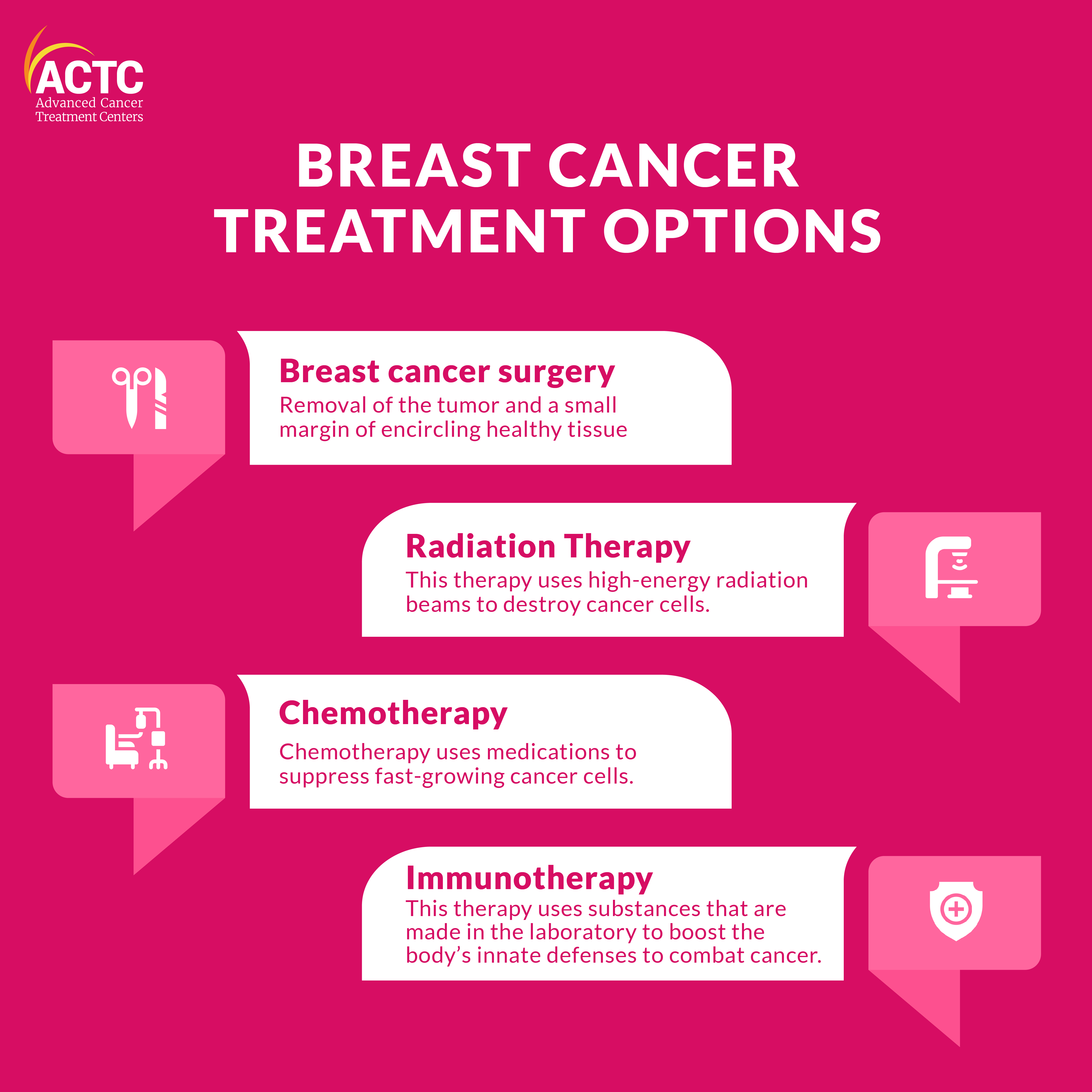
Read more: 6 Essential Dos and Don'ts for Post-Chemotherapy Recovery
An individual's outlook on breast cancer depends on the staging, detection, and treatment. Timely detection and treatment usually lead to a positive outlook. Survival rates for breast cancer are estimations and statistics, usually based on earlier results of individuals with a particular type of cancer.
These statistics only give an idea of the survival percentage of people with the same type and stage of cancer after their breast ultraviolet cancer diagnosis and treatment. These do not predict how long an individual will survive or the results of any patient's case and only contribute to a better understanding of possible treatments with their success rate.
If you have any questions, book your appointment today at ACTC, one of the best cancer treatment clinics in Florida.



November 13, 2025
Food choices feel high-stakes during cancer care, and because of that,...
KNOW MORE

November 13, 2025
Ablation treats prostate cancer using energy such as heat, cold, elect...
KNOW MORE

November 13, 2025
Discovering a fast-growing bump on your skin can cause immediate worry...
KNOW MORE

November 13, 2025
Triple negative breast cancer (TNBC) is one of several kinds of breast...
KNOW MORE

June 03, 2024
The last decade has witnessed a sea change in oncologic treatments. Re...
KNOW MORE

April 17, 2024
Oncology is one of the most exciting fields in medicine today. Disease...
KNOW MORE
